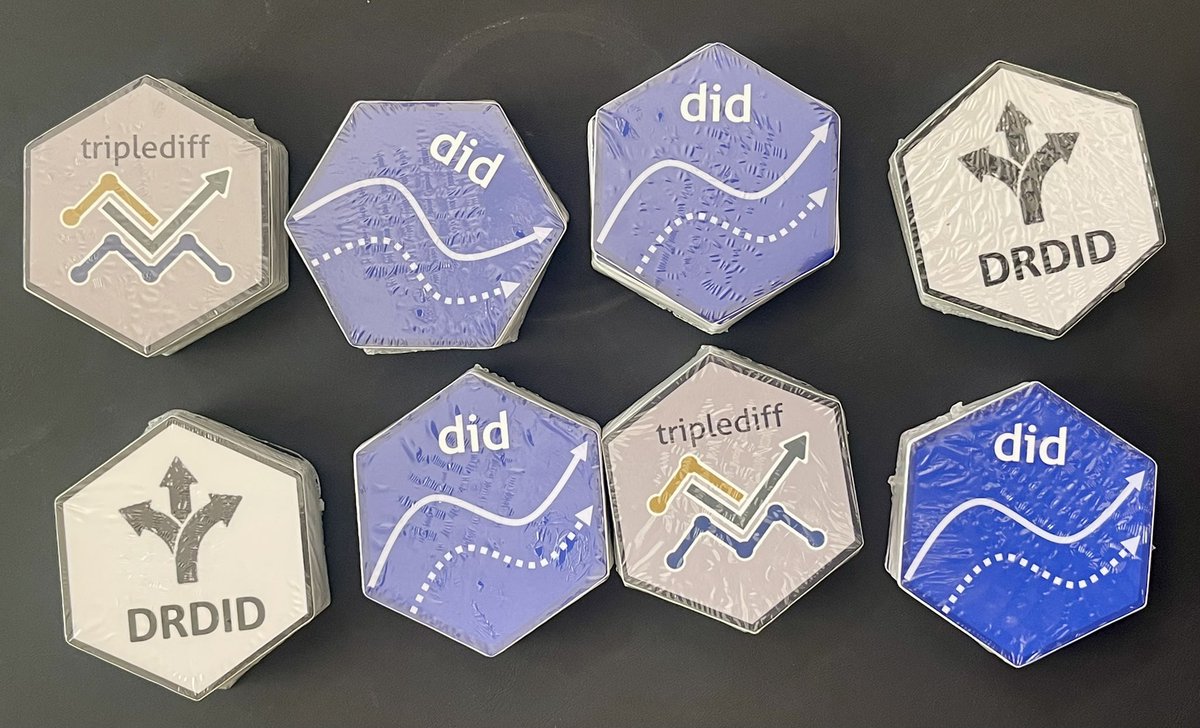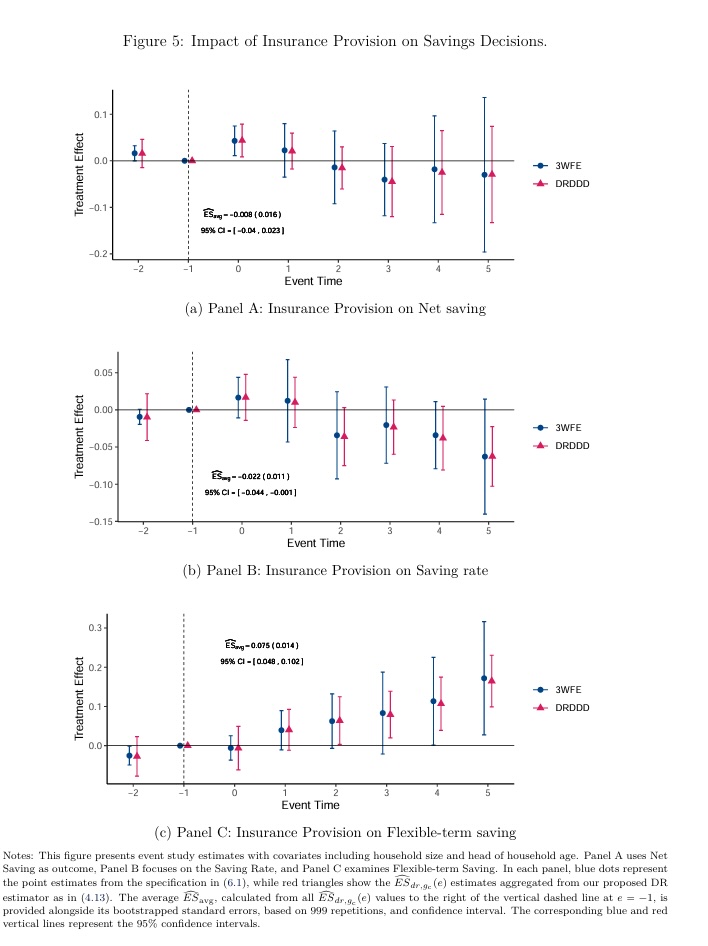
Pedro H. C. Sant'Anna
@pedrohcgs
Followers
25K
Following
18K
Media
385
Statuses
4K
Associate Professor @EmoryEconomics | Econometrics | Causal Inference | Difference-in-Differences. Dad 5x
Atlanta, GA
Joined June 2012
We have some updates on our DDD paper. In our latest version, we have introduced three new applications and an open-source R package to facilitate the usage of all our DDD tools!. 🚀R package: 🔎Updated paper:
arxiv.org
Triple Differences (DDD) designs are widely used in empirical work to relax parallel trends assumptions in Difference-in-Differences (DiD) settings. This paper highlights that common DDD...
🚨New paper alert🚨. My paper with @marcelortizv on "Better Understanding Triple Differences Estimators" is finally out. 📰 Main msg: Nuances in DDD designs challenge the practice of generally viewing DDD as the diff btw two DiDs. We can do better!. 1/
6
65
308
If you want some DiD-related stickers, just ask me when you see me! . A new batch has just arrived!. #rstats #Econometrics #causalinference
6
5
145
Here we go for another week full of GenAI, a DiD seminar, and a DiD workshop!. For those attending PolMeth at @EmoryUniversity: looking forward to connecting!.
1
0
17
Check the paper out and try our R package!. 🚀R package: 🔎Updated paper:
arxiv.org
Triple Differences (DDD) designs are widely used in empirical work to relax parallel trends assumptions in Difference-in-Differences (DiD) settings. This paper highlights that common DDD...
1
3
8
RT @ecmaEditors: Econometric analysis typically ignores researcher incentives. This article frames experimental data analysis as a mechanis….
0
49
0
What an fun and productive week!. Co-teaching with @jmwooldridge and having the help of @SofiaTsarsi and @ianLal with the labs was just awesome!.
4
2
101
Thank you, @BeatrizGietner, for covering our paper!!!.
We have a new post 🙃.Three recent DiD papers, one shared goal: better estimates in messy settings.☑️DiD that hits efficiency bounds.☑️Synthetic DiD that mimics an oracle.☑️TWFE vs. the new wave.👉
1
5
42
RT @jmwooldridge: It’s a real pleasure team teaching a course with @pedrohcgs. Many are referring to us as “Fire and Ice.” .
0
12
0
We hope this paper will be helpful for you!. We will work on packaging everything so you can adopt all this seamlessly. The paper is here: Thanks!!!. 17/17.
arxiv.org
This paper investigates efficient Difference-in-Differences (DiD) and Event Study (ES) estimation using short panel data sets within the heterogeneous treatment effect framework, free from...
1
2
11















